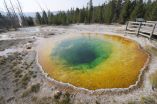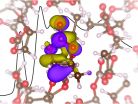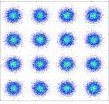(Press-News.org) PROVIDENCE, R.I. [Brown University] -- Neutrophils, a type of white blood cell, are the immune system's all-terrain vehicles. The cells are recruited to fight infections or injury in any tissue or organ in the body despite differences in the cellular and biochemical composition. Researchers from Brown University's School of Engineering and the Department of Surgery in the Warren Alpert Medical School collaborated to devise a new technique for understanding how neutrophils move in these confined spaces.
The technique involves two hydrogel sacks sandwiched together with a miniscule space in between. Neutrophils could be placed in that space, mimicking the confinement they experience within tissue. Time-lapse cameras measure how fast the cells move, and traction force microscopes determine the forces the cells exert on the surrounding gel.
In a paper published in the Journal of Biological Chemistry, the researchers used the device to reveal new details about the motion of neutrophils. Bodily tissues are highly confined, densely packed, three-dimensional spaces that can vary widely in physical shape and elasticity. The researchers showed that neutrophils are sensitive to the physical aspects of their environment: They behave differently on flat surfaces than in confined three-dimensional space. Ultimately, the team hopes the system can be useful in screening drugs aimed at optimizing neutrophils to fight infection in specific tissue types.
Traditionally, research on neutrophil motion in the lab is often done on two-dimensional, inflexible surfaces composed of plastic or glass. Those studies showed that neutrophils move using arm-like appendages called integrins. The cell extends the integrins, which grab onto to flat surfaces like tiny grappling hooks. By reeling those integrins back in, the cell is able to crawl along.
Scientists thought that by inhibiting integrins, they could greatly reduce the cells' ability to move through tissue. That, they thought, could be a good strategy for fighting autoimmune diseases in which neutrophils attack and damage healthy tissue.
But in 2008, a landmark paper showed that neutrophils have a second mode of motion. The work showed that cells in which integrins had been disabled were still able to move through dense tissue.
Christian Franck, assistant professor of engineering at Brown, and his colleagues wanted to learn more about this second mode of motion.
"On flat 2-D surfaces there's integrin-dependent motion, but in complicated 3-D materials there's integrin-independent motion," Franck said. "The question we were asking is can we find an in-vitro system that can recreate that integrin-independent motion, because you can't get it in a regular petri dish."
Using their gel system and the traction force microscopes, Franck and his colleagues showed that, when confined, neutrophils exert force in several distinct spots. On the bottom of the cell, forces were generated in a way that was consistent with previous imaging of integrin engagement. But on the top of the cell, there was another source of force. The cell pushed on the upper gel surface with its nuclear lobe, the area of the cell where DNA resides.
"It's like a rock climber pushing against the walls of a canyon," Franck said.
To see if the force generated by the nuclear lobe was responsible for the cells' ability to move without integrins, the researchers repeated the experiment with cells in which integrins were chemically inhibited. Sure enough, the cells were still able to move when confined between the gels. In fact, they were able to move faster.
"We showed that physical confinement is the key feature to reproduce integrin-independent motion in a relatively simple setting," Franck said. "That wasn't possible previously on a flat surface."
The fact that confined cells actually move faster without their integrin suggests that even though integrins aren't essential for the cells motion, they still play a regulatory role.
"What we showed was that [use of integrins] is not black and white," Franck said. "Even in this integrin-independent motion, integrins remain to regulate motion and force generation."
Now that they have a means of recreating how neutrophils travel through confined spaces in the lab, Franck and his team plan to do further experiments aimed at fine-tuning that motion. The system they've developed enables them to control the stiffness of the gel surfaces between which the cells travel, mimicking the varying stiffness of tissue in the body.
"If motility is specific to a neutrophil being in a specific tissue, maybe we could attenuate its response," Franck said. "Maybe we could make it move faster in the muscle and slower everywhere else, for example."
This new system enables testing of drugs aimed at doing just that. Such drugs could be of great benefit to people who have disorders of the immune system.
INFORMATION:
Franck's co-authors on the study were Jennet Toyjanova, Estefany Flores-Cortez, and Jonathan S. Reichner. The research was supported by the National Institutes of Health (grants GM066194 and AI101469), and by a Brown University seed grant.
PHILADELPHIA - (Dec. 19, 2014) - A common polymorphism - a variation in a person's DNA sequence that is found with regularity in the general population - can lead to a chain of events that dictates how a tumor will progress in certain types of cancer, including a form of breast cancer as well as ovarian cancer, according to new research from The Wistar Institute that was published online by the journal Cancer Cell.
The research reveals a more explicit role about the symbiotic relationship humans have with the various bacteria that inhabit our body and their role during ...
(Edmonton) For millions of people around the world, televised medical talk shows have become a daily viewing ritual. Programs such as The Dr. Oz Show and The Doctors have attracted massive followings as charismatic hosts discuss new medical research and therapies while offering viewers their own recommendations for better health. For show producers it's a winning ratings formula, but for viewers eager for a healthier life, the results aren't so clear cut.
"The research supporting any of these recommendations is frequently absent, contradictory or of poor quality," says ...
Women whose loved ones are critical of their weight tend to put on even more pounds, says a new study on the way people's comments affect our health.
Professor Christine Logel from Renison University College at the University of Waterloo led the study, which appears in the December issue of the journal Personal Relationships.
"When we feel bad about our bodies, we often turn to loved ones--families, friends and romantic partners--for support and advice. How they respond can have a bigger effect than we might think," said Professor Logel, who teaches social development ...
WASHINGTON D.C., December 19, 2014 - Researchers at Montana State University and Brandenburg University of Applied Sciences in Germany have created a simple mathematical model based on optical measurements that explains the stunning colors of Yellowstone National Park's hot springs and can visually recreate how they appeared years ago, before decades of tourists contaminated the pools with make-a-wish coins and other detritus.
The model, and stunning pictures of the springs, appear today in the journal Applied Optics, which is published by The Optical Society (OSA).
If ...
Despite showing interest in web or mobile apps to help manage their Type 2 diabetes, only a small number of older adults actually use them, says a new study from the University of Waterloo. Approximately 2.2 million Canadians are living with Type 2 diabetes, 2 million of whom are age 50 or older.
The study, which appears in the online edition of the Journal of Diabetes Science and Technology, found that although more than 90 per cent of research participants owned a computer or had daily Internet access, just 18 per cent used applications on this technology to help manage ...
The lithium-ion batteries that mobilize our electronic devices need to be improved if they are to power electric vehicles or
store electrical energy for the grid. Berkeley Lab researchers looking for a better understanding of liquid electrolyte may have found a pathway forward. A team led by Richard Saykally, a chemist with Berkeley Lab's Chemical Sciences Division, David Prendergast, a theorist with Berkeley Lab's Molecular Foundry, and Steven Harris, a chemist with the Lab's Materials Sciences Division, found surprising results in the first X-ray absorption spectroscopy ...
It's like a scene from a gamer's wildest dreams: 12 high-definition, 55-inch 3D televisions all connected to a computer capable of supporting high-end, graphics-intensive gaming.
On the massive screen, images are controlled by a Wii remote that interacts with a Kinnect-like Bluetooth device (called SmartTrack), while 3D glasses worn by the user create dizzying added dimensions.
But this real-life, computer-powered mega TV is not for gaming. It's for engineering.
Welcome to Brigham Young University's VuePod, a 3D immersive visualization environment run by BYU's Department ...
New research indicates that reducing emergency surgery for three common procedures by 10 percent could cut $1 billion in health care costs over 10 years.
As hospitals and health systems increasingly focus on addressing the rising cost of health care in the United States, and with the expense of surgical care playing a major role, physician researchers and others across the healthcare industry are working to identify innovative ways to reduce surgical costs.
In new findings published online in the journal Annals of Surgery on December 19, 2014, researchers determined ...
Researchers from the University of Southampton have revealed a breakthrough in optical fibre communications.
Academics from the University's Optoelectronics Research Centre (ORC) have collaborated with colleagues at Eblana Photonics Inc, in Ireland, to develop an approach that enables direct modulation of laser currents to be used to generate highly advanced modulation format signals.
The research, published in the journal Nature Communications, explores a radically new approach to the generation of spectrally-efficient advanced modulation format signals as required ...
Carnivorous plants catch and digest tiny animals in order and derive benefits for their nutrition. Interestingly the trend towards vegetarianism seems to overcome carnivorous plants as well. The aquatic carnivorous bladderwort, which can be found in many lakes and ponds worldwide, does not only gain profit from eating little animals but also by consuming algae and pollen grains. This results in survival in aquatic habitats where prey animals are rare, and in increased fitness if the animals and algae are caught in a well-balanced diet. An Austrian research group around ...





